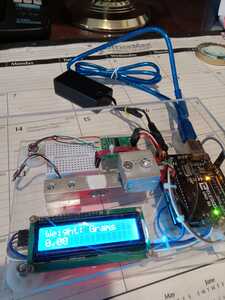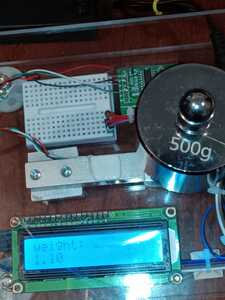@davee Even 20ma may fry the UNO R4, it is limited to 8ma. There are better boards for this job.
First computer 1959. Retired from my own computer company 2004.
Hardware - Expert in 1401, and 360, fairly knowledge in PC plus numerous MPU's and MCU's
Major Languages - Machine language, 360 Macro Assembler, Intel Assembler, PL/I and PL1, Pascal, Basic, C plus numerous job control and scripting languages.
Sure you can learn to be a programmer, it will take the same amount of time for me to learn to be a Doctor.
Hi Ron @zander,
I haven't looked at UNO R4 spec, but LouisR @inst-tech's solution means none of the LED current passes through the UNO.
The problem may be tracking a 7446 down.
If not, I have a plan B, but it involves individual transistors, so more wiring.
Plan C might also be available, but needs a little research. Let's see if Louis's solution is viable first.
Best wishes, Dave
@davee I know. The NANO is close, and if I read the docs correctly it may be able to handle even more than it's rated 20ma per pin. Always good to have choices.
First computer 1959. Retired from my own computer company 2004.
Hardware - Expert in 1401, and 360, fairly knowledge in PC plus numerous MPU's and MCU's
Major Languages - Machine language, 360 Macro Assembler, Intel Assembler, PL/I and PL1, Pascal, Basic, C plus numerous job control and scripting languages.
Sure you can learn to be a programmer, it will take the same amount of time for me to learn to be a Doctor.
Hi Ron @zander,
With the 7446, or any form of external driver, the UNO only needs a low current output drive of -1.6mA to pull each of the 7446 data line inputs to low, and 40 microAmps to pull them to high.
I would hope all 'species' of UNO could manage these levels, albeit I haven't checked.
My concern is the 7446 only appears to have been implemented in the original 54/74 series and the 54/74LS (The latter with lower current outputs.). Although TI are still maintaining the data sheet, I wonder how many devices are readily available.
Best wishes, Dave
@davee Once again, I know, how many times are we going to repeat this?
First computer 1959. Retired from my own computer company 2004.
Hardware - Expert in 1401, and 360, fairly knowledge in PC plus numerous MPU's and MCU's
Major Languages - Machine language, 360 Macro Assembler, Intel Assembler, PL/I and PL1, Pascal, Basic, C plus numerous job control and scripting languages.
Sure you can learn to be a programmer, it will take the same amount of time for me to learn to be a Doctor.
@davee , Yes the SN7446/ Sn74LS47 are available, as I have some of the sn74LS47's and also some CD4028, and Cd4411BE cmos types..The Sn7446 is a higher sink current @ 40 mA, while the sn74LS47 is @24 mA sink current. The cmos are very low sink currents of around 1mA I think.. and for battery supply projects would probably be better as far as power consumption is concerned. I think the OP may be out of his element on the technical skill required to do this project, but hey, that's how you learn! We were all newbies at one time or another, albeit it was 50 years ago for me...lol
regards,
LouisR
LouisR
Hi LouisR @inst-tech,
Thanks for your valuable input. I completely agree with your comments, although I prefer the terms newcomers or beginners, which still seems to me to be a nicer description. In fact, as someone who is always on the lookout for something new, I might describe myself as a permanent newcomer/beginner, who continually runs into all sorts of brick walls, and when I eventually find a way over one, I go looking for another one. 🤨
It seems pretty clear those large 3D LEDs are going to need a fairly high current drive, so the 7446's 40mA is appropriate. I tried looking for CMOS 7 segment driver devices, but they all seemed to be surprisingly low current drive.
Of course, there are alternatives, but the only simple alternative I can think of needs 7 (or 8) UNO digital output pins, as well as more wiring, etc.
Best wishes, Dave
@davee , Yep..your right, not a lot of alternatives for what the OP is trying to do that wouldn't require a lot of extra components and wiring. well, he has to learn like everyone else does..a "brick wall" now and then separates the men from the boys in the pursuit of higher technical skills...lol Speaking of which, I assume that your back ground is technical engineering in electronics? This makes it much more interesting for those just beginning or picking up where they left off years back. I've been engaged in electronics and electrical controls all my adult life, so for me it's just second nature I guess.. 😎
I just finished a project for a digital kitchen scale that I've been collaborating with @zander with. here's a few photos of the finished product. The load cell, (Strain gage) is a 10 Kg, but it's calibrated for 1Kg.. the photo on the right shows a 500 g calibration weight, with the read out in LBS, and also in the left in grams as it cycles through at 2 second intervals.
now on to other "walls to climb over"...hehehe
regards,
LouisR
LouisR
@inst-tech Not bad, but mine will be prettier and have WiFi.
First computer 1959. Retired from my own computer company 2004.
Hardware - Expert in 1401, and 360, fairly knowledge in PC plus numerous MPU's and MCU's
Major Languages - Machine language, 360 Macro Assembler, Intel Assembler, PL/I and PL1, Pascal, Basic, C plus numerous job control and scripting languages.
Sure you can learn to be a programmer, it will take the same amount of time for me to learn to be a Doctor.
@zander, Ron...be careful of that "creeping elegance" hahahaha
I did it this way for demonstration purposes..it can be seen very easily how to build and the work'n inerds..lol
Looking forward to seeing how you make out!
regards, LouisR
LouisR
Hi Louis @inst-tech,
A neat little prototype which seems to be working well.
I too have been involved with electronics all my life, but I don't recall ever needing an LED 7 segment driver chip, and it is very a long time since I saw a TTL 54/74 (as against CMOS) series chip being chosen for any role!
Best wishes, Dave
@inst-tech Well we know beauty is in the eye of the beholder. I will get the basic model working first, then try adding in the WiFi.
First computer 1959. Retired from my own computer company 2004.
Hardware - Expert in 1401, and 360, fairly knowledge in PC plus numerous MPU's and MCU's
Major Languages - Machine language, 360 Macro Assembler, Intel Assembler, PL/I and PL1, Pascal, Basic, C plus numerous job control and scripting languages.
Sure you can learn to be a programmer, it will take the same amount of time for me to learn to be a Doctor.
@davee , indeed..the 54/74 series are left-overs from by-gone days back in the 1970'& 80's before CMOS and LSI. I remember, as I suspect you do too, when LSI was only 600 gates on a chip...lol I used plenty of them back in the day when I was just learning solid state.. My Navy career was tube theory ( I think you EU's call them Valves) heheh
I like to use them sometimes when I'm trying to show some newbie the contrast in how technology has transformed the art of electronics over the last 58 years since I first started.
Just so you know..I love CMOS! and I'm grateful that it came along making my life easier...
regards, LouisR
LouisR
Hi Louis @inst-tech,
Nice to have a quick flash of nostalgia! I too remember valves (tubes), as well as germanium diodes and transistors. In TVs, there were treats like multi-finned selenium rectifiers, and multi-section dropper resistors that would progressively go open circuit, a section at a time, usually resulting in easy, regular jobs for repair men and discrete resistors being draped between the broken sections, like decorations on a Christmas tree. The main reason for the considerable number of sections being the different mains voltages that might be encountered.
600 gates was indeed Large Scale Integration, compared to the ubiquitous SN7400 which only had 4 gates!
I also find CMOS a better way to go for most projects ... but it seems there is still the occasional exception to validate the rule!
Best wishes, Dave
@inst-tech Hi Louis, there is something I don't understand. You say the sensor is rated at 10Kg. I assume that is the maximum weight. Then you say it is calibrated to 1 kg. In the picture, you are showing a 500gm or 0.5Kg weight being measured. I think that is all correct.
If the sensor has a max (100%) rating of 10 kg but you 'calibrate' it to a new max of 1Kg then you are only using 10% of the ability of the sensor. It has always been my understanding that any measuring device is going to be the least accurate at the low and high 10% of its range (generality).
So my question is why didn't you use a 1Kg sensor which would be far more accurate with the 500mg weight in the middle of its range instead of at 5% of the range of the 10Kg sensor?
First computer 1959. Retired from my own computer company 2004.
Hardware - Expert in 1401, and 360, fairly knowledge in PC plus numerous MPU's and MCU's
Major Languages - Machine language, 360 Macro Assembler, Intel Assembler, PL/I and PL1, Pascal, Basic, C plus numerous job control and scripting languages.
Sure you can learn to be a programmer, it will take the same amount of time for me to learn to be a Doctor.


